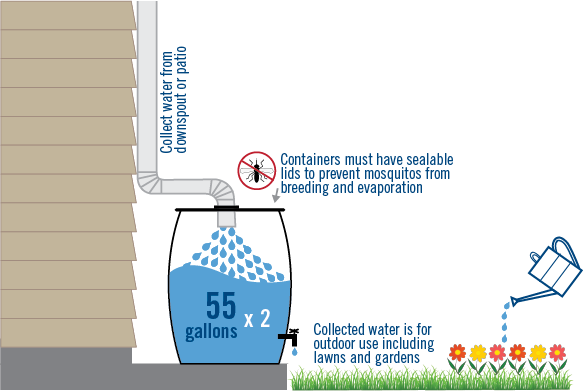Rainwater Collection#
In 2016, Gov. John Hickenlooper signed legislation allowing rainwater collection in Colorado.
Rainwater collection, or rainwater “harvesting,” is the process of collecting, storing and putting rainwater runoff to use.
This change in legislature came after a study by Colorado Stormwater Center showed that rainwater collection does not take water away from the supply available to agriculture and other water-rights holders. The study also showed that nearly all of the water collected would be absorbed in the ground by the downspout or in the garden.

Frequently Asked Questions#
-
No. Qualifying homeowners are allowed to use rain barrels for outdoor purposes only.
-
Rain barrels can only be installed at single-family and multi-family households with fewer than four units.
-
A maximum of two rain barrels can be used at each household, and the combined storage of the two rain barrels cannot exceed 110 gallons.
-
Yes. Any container capable of collecting the rain shedding from a roof or patio can be used as a rainwater harvesting system. To comply with Colorado water law, the container must be equipped with a sealable lid to reduce evaporation and bar access for mosquitoes to breed.
-
Yes. Rain barrels can only be used to capture rainwater from rooftop downspouts.
-
Captured rainwater must be used to water outdoor lawns, plants and/or gardens on the same property from which the rainwater was captured. Rainwater cannot be used for drinking or other indoor water uses.
-
No. Rainwater collected from roofs is untreated and not safe to drink.
For more information on rainwater collection and use, click here.
Did You Know?
Customers experience some of the best reliability in the country with the average household being without power for less than 20 minutes per year – that means service is available 99.99% of the time!
Lowering the thermostat temperature on winter nights and when no one is home can save money and energy.
Wearing an extra layer of clothing during the winter and lowering the thermostat a few degrees can help save money and energy.